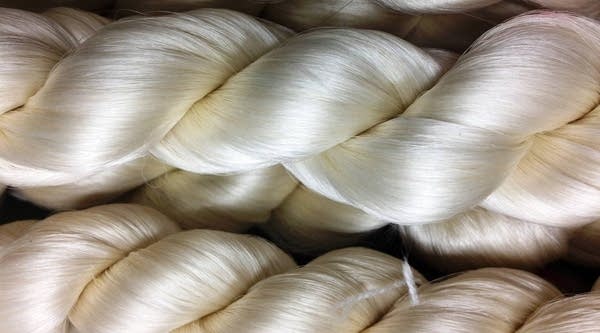Spider silk, the newest fabric for military uniforms
The silky strands made by spiders are strong and supple. Now, scientists in Michigan are using genetic engineering to reproduce spider silk for a wide range of uses, including military uniforms.

If you’re a fan of superheroes, you know the story.
Boy meets spider. Spider bites boy. Boy designs uber-cool spider suit. Now, scientists are moving from the realm of comics to reality to develop real-life uses for spider silk.
The U.S. Army has a million-dollar contract with Kraig Biocraft Laboratories, based in Ann Arbor, Michigan. The company is developing an elastic yet durable fiber that can be woven into protective clothing. The science is fairly new. But the source is very old. “Silkworms produce silk; spiders produce silk,” said Jon Rice, chief operations officer at Kraig Labs. “They have different recipes; different designs.”
Rice is describing the protein silkworms use to spin their cocoons and spiders their webs. Spiders produce a particularly tough material. The problem is, it’s hard to round up a lot of spiders in one place to harvest their silk. And they tend to eat each other.
So, Kraig Labs had to get creative.
“We’ve taken that recipe from the spider, re-created that and created an enhanced silkworm; a genetically engineered silkworm that produces that spider’s design,” Rice explained.
Rice said spider silk is more elastic than Kevlar, the fibrous material found in the Army’s combat helmet since the 1980s. So, his company’s product could also be used in body armor and even protective undergarments.
Scientists at Michigan State University are also working on a silk product derived from spider DNA. Chad Pastor is the business development manager with MSU’s Bioeconomy Institute. He said the process starts with fermenting replicated spider DNA, almost like beer. “Then, they extrude the fibers and spin them into threads to make fabrics,” said Pastor.
Silk protein fabrication is still an evolving science. But Kraig Labs is leaning on a lot of institutional knowledge. Silk has been a commercial industry since ancient China some 4,000 years ago. Now, with the advent of gene sequencing, the cost of replicating spider DNA is dropping dramatically, clearing the way for more products to come to market.
That’s all there is to tell for now. This yarn has been spun.










